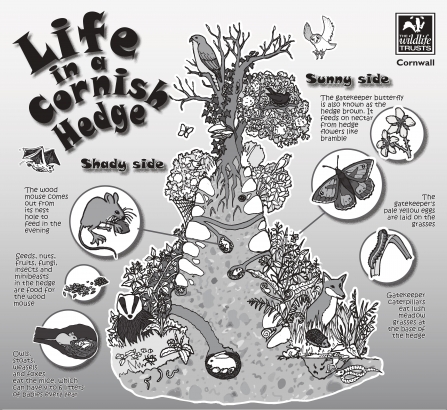If you have a garden, take a close look at all the edges and boundaries. If you have a fence, is it a place where birds can feed and raise their families? Is it somewhere where insects can buzz and flit amongst the flowers? Or is it a just a sterile row of planks or a smooth, lifeless wall with no way through for wildlife?
Like most species, humans are pretty territorial, but far too many of us live behind barriers that keep not only our neighbours out, but also roaming wildlife such as hedgehogs and newts (see hedgehog and newt blogs below).
The territories and boundaries used by other species are different from our own – and often go beyond single gardens, as other species need to find enough food, water, shelter and members of the same species to breed with.



